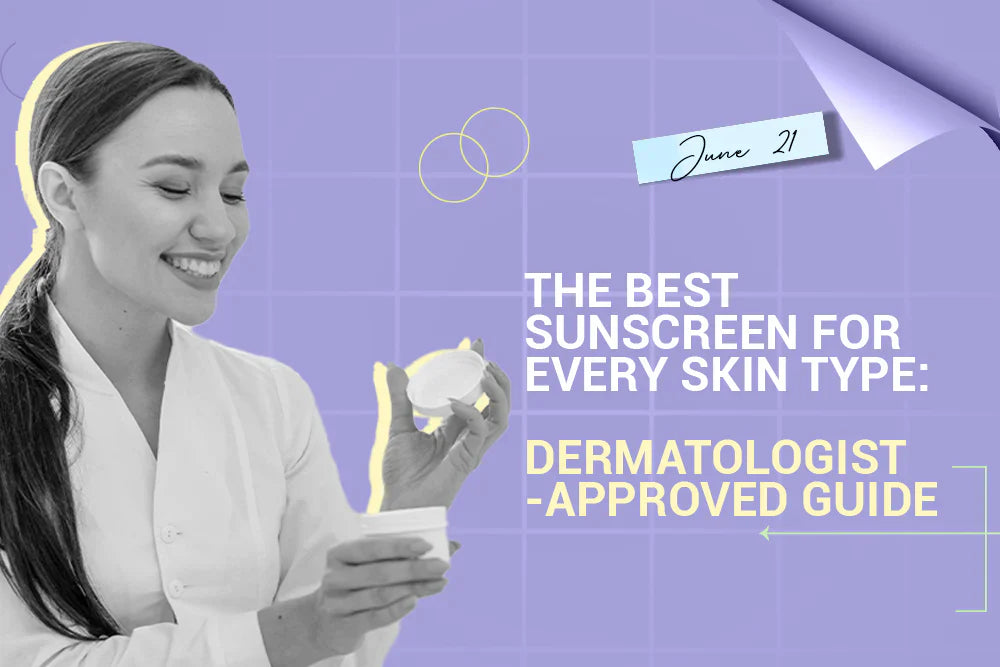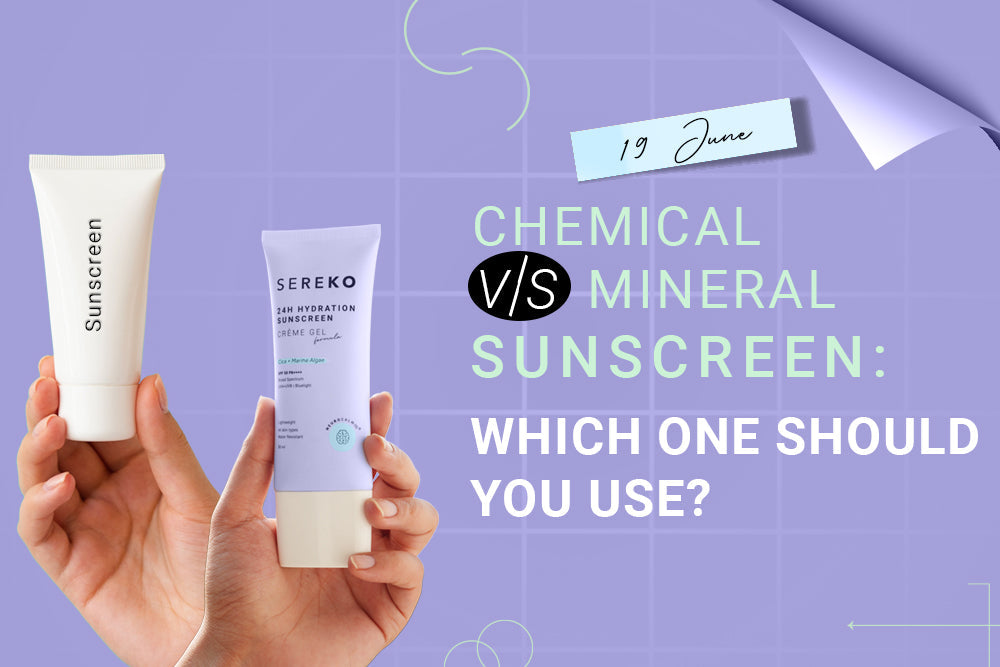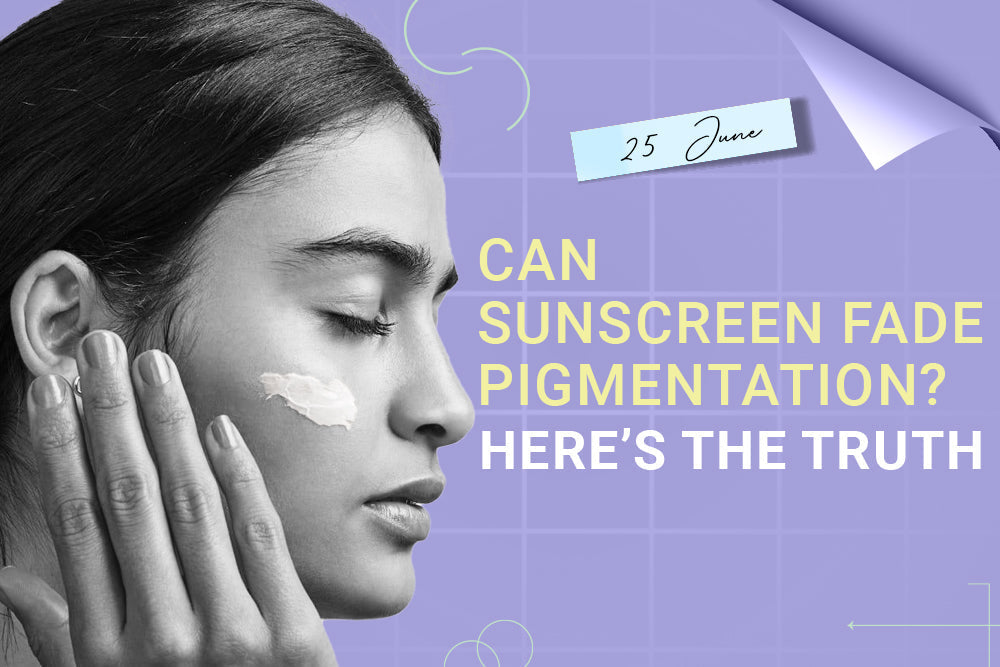It’s easy to think of sunscreen as just a summer staple, something you reach for before a beach day or a long hike. But for your skin, sunscreen is more than seasonal. It’s a daily defence system, and when chosen correctly, it can mean the difference between protected, glowing skin and long-term damage that’s invisible until it isn’t.
The truth is, not all sunscreens are created equal, and not every formula suits every skin type. What feels hydrating and soothing for one person might trigger breakouts or irritation in another. That’s why choosing the right sunscreen isn’t just about SPF; it’s about understanding your skin, its needs, and how ingredients interact with it.
Whether your skin leans oily, dry, sensitive, or a bit of everything, this dermatologist-backed guide will help you sort through the clutter and find a sunscreen that truly works, with real product recommendations, including standout options from SEREKO’s sun protection range.
How Different Skin Types React to Sun Exposure.
Sun exposure doesn’t affect all skin types the same way. Oily skin may feel even greasier under the sun, while dry skin can feel tight and flaky. Sensitive skin is prone to redness or stinging, and deeper skin tones often deal with uneven pigmentation rather than visible sunburn. Recognizing how your skin responds to UV exposure is the first step to finding a product that protects without compromise.
The Role of Sunscreen in Skin Health and Protection
Beyond sunburn, UV damage quietly accelerates signs of ageing, dullness, and dark spots, even on cloudy days. Daily use of a broad-spectrum sunscreen SPF 50, PA++++ helps prevent these changes while supporting your skin barrier. And when the formula suits your skin type, it doesn’t just protect, it also improves how your skin looks and feels over time.
Sunscreen for Oily and Acne-Prone Skin
1. Key Ingredients to Look For and Avoid
If your skin tends to shine by noon or is prone to breakouts, look for sunscreens labelled non-comedogenic or “oil-free.” Ingredients like niacinamide, silica, and zinc oxide help regulate oil without clogging pores. On the flip side, avoid rich emollients or heavy occlusives like mineral oil or lanolin—they’re more likely to trap sweat and bacteria.
2. Best Sunscreen Formulations for Oily Skin
Gels, lightweight fluids, and water-based lotions are ideal. These textures absorb quickly, leave no residue, and won’t suffocate your pores. One to consider:
SEREKO’s Weightless Sun Fluid SPF 50, PA++++ with Hybrid UV Filters – designed specifically for oily and acne-prone skin, it offers a silky finish with zero shine or stickiness.
Tips to Prevent Breakouts While Using Sunscreen
- Always apply sunscreen to clean, dry skin.
- Choose products free from alcohol and fragrance.
- Layer it after your moisturizer, not before.
Don’t skip reapplication, carry a mist version for easy touch-ups.
Sunscreen for Dry and Sensitive Skin
1. Hydrating Ingredients That Support the Moisture Barrier
If your skin feels tight or flaky, or reacts easily to skincare, choose a sunscreen that does more than just protect. Hydrating ingredients like glycerin, hyaluronic acid, and ceramides help reinforce the moisture barrier while reducing irritation.
2. Mineral Sunscreens and Why They’re Better for Sensitive Skin
For sensitive types, mineral sunscreen often wins out. It forms a physical shield on your skin and is less likely to cause stinging or redness. Zinc oxide is particularly gentle and even offers anti-inflammatory benefits, making it ideal for reactive skin.
3. How to Avoid Irritation and Redness
- Stick to fragrance-free and alcohol-free options.
- Use products tested on sensitive skin.
- Try patch-testing new sunscreens before full application.

For instant hydration and cooling effect, try the 24H Hydration Sunscreen, SPF 50, PA++++ with New Gen UV Filters – it delivers intense moisture and sun protection in one daily-use formula.
Sunscreen for Normal and Combination Skin
1. Balancing Hydration and Oil Control
Normal and combination skin can usually tolerate a wide range of SPF formulas, but balance is key. You want enough hydration to keep dry spots soft, without overloading oil-prone areas like the T-zone.
2. Recommended Sunscreen Types and Textures
Light creams, emulsions, and hybrid gel-creams tend to offer the best of both worlds. If you wear makeup, a sunscreen mist can make mid-day touch-ups easier and more seamless.
We have the perfect pick for you: Hydra-Protect Sun Mist, SPF 50, PA++++ with New Gen UV Filters, a breathable, invisible mist that works well under or over makeup, keeping skin protected without disrupting your look.
3. Seasonal Adjustments in Sunscreen Choice
Spring/Summer: Lightweight fluids or mattifying mists
Fall/Winter: Creamier textures with barrier-supporting ingredients
Year-round: SPF 50 for maximum daily protection
Sunscreen for Skin of Color
1. Challenges Like White Cast and Uneven Coverage
People with melanin-rich skin often skip sunscreen because of a frustrating white cast or chalky residue. The good news: newer, well-formulated SPFs, including some mineral options, can now deliver protection that blends invisibly on deeper tones.
2. Mineral vs Chemical Sunscreens for Deeper Skin Tones
While chemical sunscreens typically absorb without leaving residue, mineral sunscreens have made major strides in transparency. Look for micronized zinc oxide and tinted formulas designed for medium to deep skin tones.
Application Tips for Even, Non-Greasy Coverage
- Look for terms like “sheer,” “clear,” or “transparent finish”.
- Apply in thin layers and press into the skin for even coverage.
- Reapply every 2 hours for extended sun protection.
Conclusion
Finding the right sunscreen is about more than just picking an SPF number. It’s about understanding your skin type, your lifestyle, and how different ingredients perform on your face. Whether you’re acne-prone, ultra-sensitive, or just want a better daily routine, there is a perfect match out there.
SEREKO’s dermatologist-approved sun care line offers options tailored to different skin needs, so no matter your skin type, there’s a lightweight, skin-loving SPF that fits right in.



